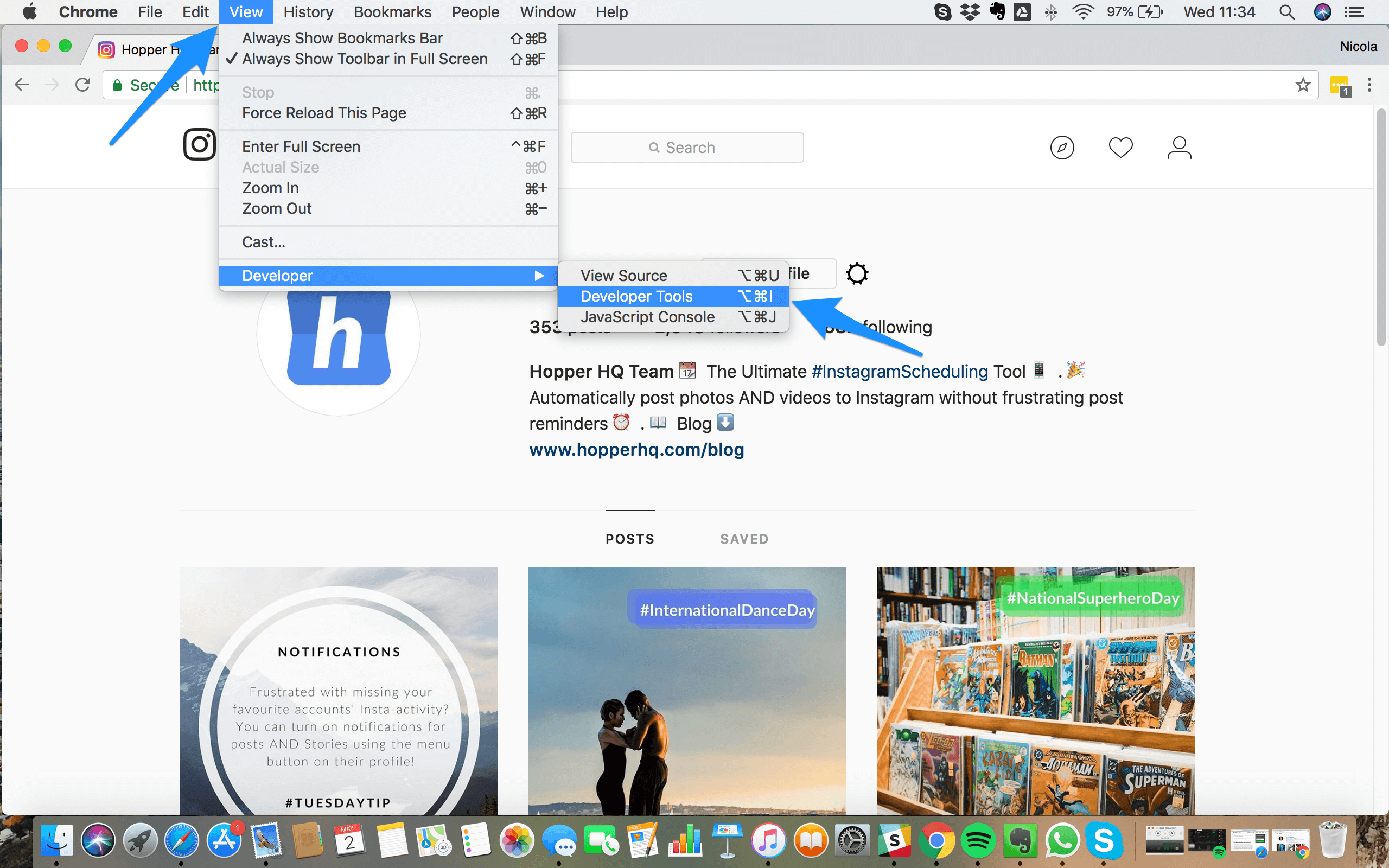
- #Post an instagram photo from mac for fee how to
- #Post an instagram photo from mac for fee install
- #Post an instagram photo from mac for fee full
- #Post an instagram photo from mac for fee download
$excel = Open-ExcelPackage -Path './processes.xlsx' To find a cell value, first, open up the Excel workbook to bring it into memory. Instead, using the Open-ExcelPackage cmdlet, you can “convert” an Excel workbook into a PowerShell object which can then be read and manipulated.
#Post an instagram photo from mac for fee how to
You now know how to read an entire Excel worksheet with PowerShell but what if you only need a single cell value? You technically could use Import-Excel and filter out the value you need with Where-Object but that wouldn’t be too efficient. Using PowerShell to Get (and Set) Excel Cell Values
#Post an instagram photo from mac for fee full
For a full rundown on everything Import-Excel can do, run Get-Help Import-Excel. The Import-Excel cmdlet has other parameters you can use to read Excel workbooks of all kinds. Import-Excel -Path './processes.xlsx' -WorkSheetname Processes -HeaderName 'CPU','Handle' Import-Excel -Path './processes.xlsx' -WorkSheetname SecondWorksheetĭo you need to only read certain columns from the Excel worksheet? Use the HeaderName parameter to specify only those parameters you’d like to read. Maybe you have multiple worksheets in an Excel workbook? You can read a particular worksheet using the WorksheetName parameter. Get-Process | Export-Excel -Path './processes.xlsx' You can see an example of the command and screenshot of the Excel file generated below. To export that information to Excel, use the Export-Excel cmdlet providing the file path to the Excel workbook that will be created. To find processes running on a system with PowerShell, use the Get-Process cmdlet which returns each running process and various information about each process.

You can pipe any kind of object to this cmdlet. The Export-Excel cmdlet accepts any object exactly the way Export-Csv does. Using the Export-Excel cmdlet in the ImportExcel module, you can easily make it happen.įor example, perhaps you need to find some processes running on your local computer and get them into an Excel workbook. One of the most common requests a sysadmin has is exporting PowerShell objects to an Excel worksheet. But using the ImportExcel module, you can build your own functionality. Unfortunately, there’s no Export-Excel and Import-Excel cmdlets. These cmdlets allow you to read and export PowerShell objects to CSV files. You may be familiar with the standard PowerShell cmdlets Export-Csv and Import-Csv. Using PowerShell to Export to an Excel Worksheet After a few moments, you’ll be good to go.
#Post an instagram photo from mac for fee download
Start by download and installing the module via the PowerShell Gallery by running Install-Module ImportExcel -Scope CurrentUser. If you’re using macOS, be sure to restart your PowerShell session before continuing. All examples in this article will be built using macOS but all examples should work cross-platform.

#Post an instagram photo from mac for fee install
However, if you’re working on macOS, you will need to install the mono-libgdiplus package using brew install mono-libgdiplus.

When running the ImportExcel module on a Windows system, no separate dependencies are necessary.

Thankfully, an astute PowerShell community member, Doug Finke, created a PowerShell module called ImportExcel for us mere mortals. Excel workbooks required PowerShell to manipulate complicated Component Object Model (COM) objects thus you had to have Excel installed. Unlike it’s less-featured (and simpler) CSV file counterpart, Excel workbooks aren’t just simple text files. What’s the best scenario of automation and Excel? PowerShell!Įxcel spreadsheets have always been notoriously hard to script and automate. Many IT professionals use Excel as a little database storing tons of data in various automation routines. Microsoft Excel is one of those ubiquitous tools most of us can’t escape even if we tried.


 0 kommentar(er)
0 kommentar(er)
